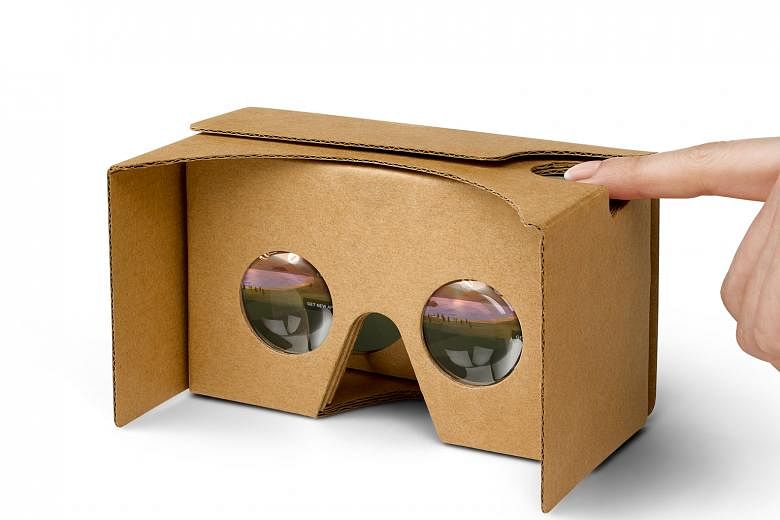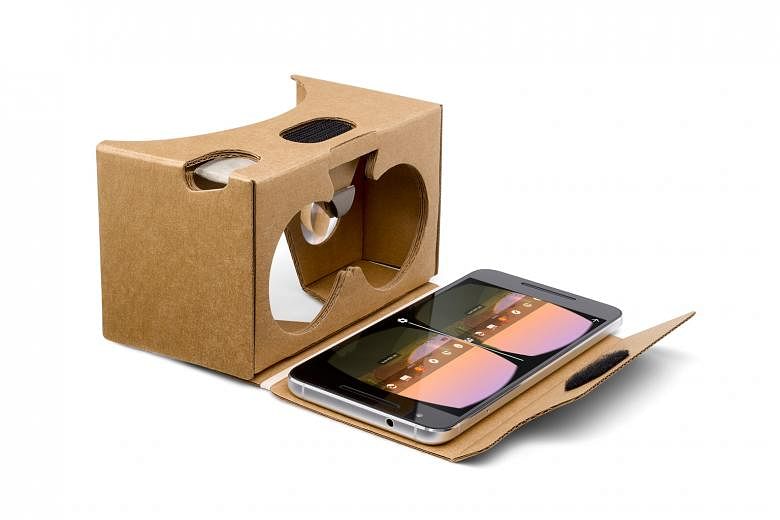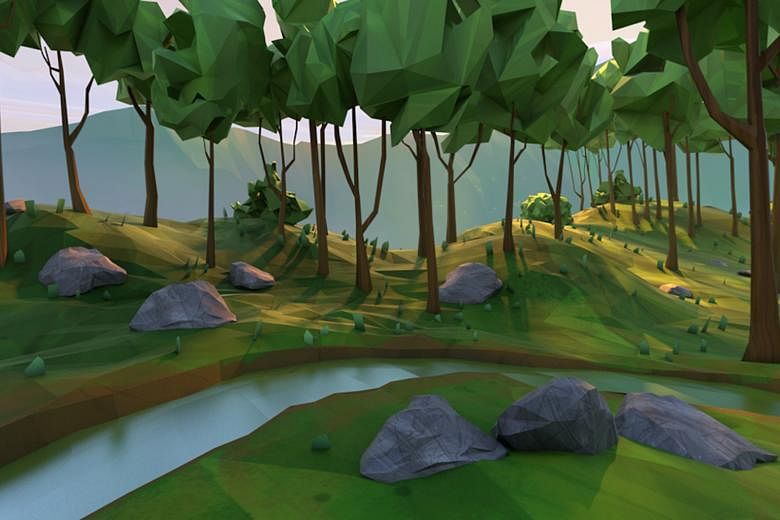New developments in media technology mean that virtual reality is no longer the preserve of science fiction films like The Matrix.
Rather, it is becoming increasingly more accessible to the man in the street, thanks to an innovation called Google Cardboard, from United States-based tech giant Google.
Google Cardboard, launched in June 2014, is a small cardboard box no bigger than a brick.
Yet this unassuming, inexpensive device is Google's answer to the high-cost barrier that once separated the masses from the virtual reality experience.
It is a basic cardboard headset with a frontal viewfinder-style pair of lenses.
Just slot your smartphone into its back, turn on a video with a 360-degree function and peer through the lenses to be immersed in a makeshift virtual reality.
A 360-degree video is shot such that viewers can see all the different angles of the scene merely through moving their screens, or in the case of the Cardboard, their heads.
Mr Gautam Anand, Asia-Pacific content and operations director of Google's video streaming platform YouTube, said: "Virtual reality and 360 video are transforming the way we experience stories.
"With virtual reality, the physical distance is gone and the experience drives your senses in different ways that make you feel like you are there, and this is really happening."
While a hi-tech virtual reality headset would set you back at least a few hundred dollars, the Google Cardboard costs US$15 (S$20.30) online.
You could even make your own with the help of an instructional YouTube video.
On YouTube, more than 350,000 hours of video worldwide have already been watched in Cardboard's virtual reality.
News organisations are seizing upon this new method of storytelling. Last November, the New York Times (NYT) shipped a million Cardboards to subscribers for free, followed by another 300,000 this May.
Readers could use the Cardboards to immerse themselves in NYT's virtual reality projects, from a walking tour of New York's streets to a look into the lives of children displaced by war.
Closer to home, Google has partnered the Singapore Art Museum to create a virtual reality Cardboard tour for its After Utopia exhibition, allowing viewers around the world to look at the museum's artwork online.
Google last year extended the technology to static photos via the Cardboard Camera app, which enables users to take a 360-degree photo and relive the experience in the photo by viewing it through Cardboard.
YouTube also launched 360 live streaming in April, which allows users to watch events as they happen, such as the California music festival Coachella, through virtual reality gear. Coupled with spatial audio, which allows one to experience sounds from different directions, it simulates the experience of attending these events in real life.
Singaporeans will be able to watch the upcoming Singapore Fashion Week in October streamed live in this way.
Google is currently working on Project Daydream, a new platform that will make apps on Android smartphones, such as YouTube, Street View and Play Store, accessible in high-quality virtual reality.
Together with smartphone manufacturers, it is developing designs for a virtual reality viewer and controller to go with these phones.
Daydream will be released in autumn in countries which have yet to be specified.
Said Mr Anand: "The vast majority of people who experience virtual reality over the next few years will do so via a smartphone.
"We believe that as people get their first taste of virtual reality, using the smartphone they'll have in their pocket can be a very powerful tool to transform the way they enjoy news, videos, movies, games and also help them explore the world."




